Virtual Paternoster Row
The way in which the model was constructed is described in a report, not generally available electronically. The model was developed with two types of output in mind: firstly, the production of 'photo-realistic' images and movie clips; and secondly, for interactive use in the super-high-definition display facility in the School of Computer Science and Electronic Engineering.
Only ten photographs of Paternoster Row appear to exist. These were applied to the facades of the modelled buildings. Buildings that have the correct facade are shaded in grey, while buildings for which the true appearance is unknown have a facade shaded in blue. A small number of hand drawings of streets adjacent to Paternoster Row also exist, and these have been used (with the same colouring convention) too.
The two images shown below allow you to "walk" along Paternoster Row — just click on the image to view the movie clip. They follow the same route but one has all the buildings shaded in grey, while the other shows the blue shading of "unknown" buildings discussed above.
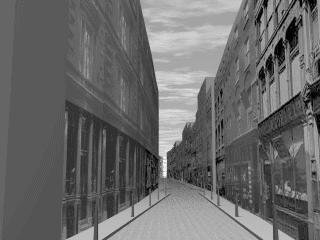
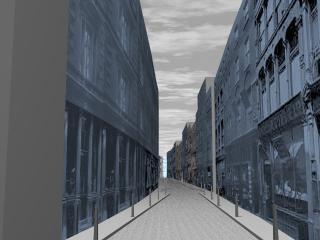
View looking eastwards from the west end (MP4 format, 70 Mbytes)
A few other static images of the model are shown below.
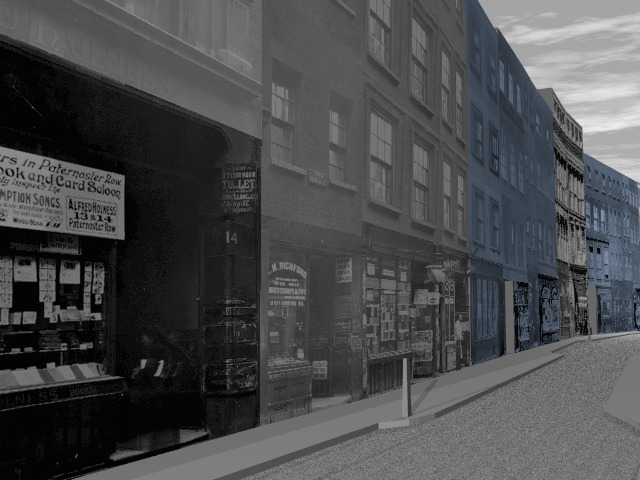
Looking eastwards with Nos 14 and 13 in foreground
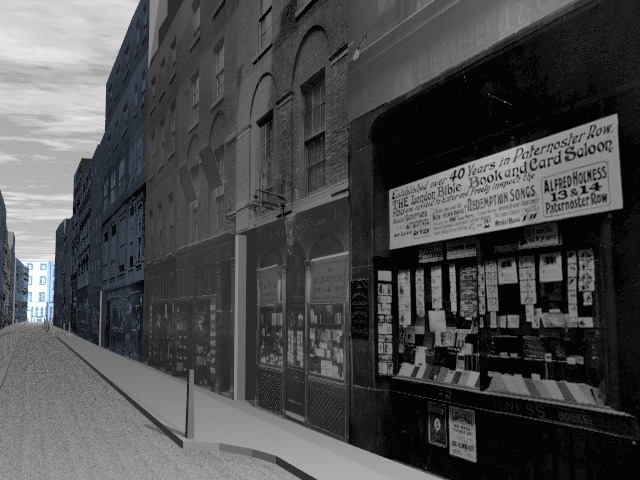
Looking westwards with Nos 14 and 15 in foreground
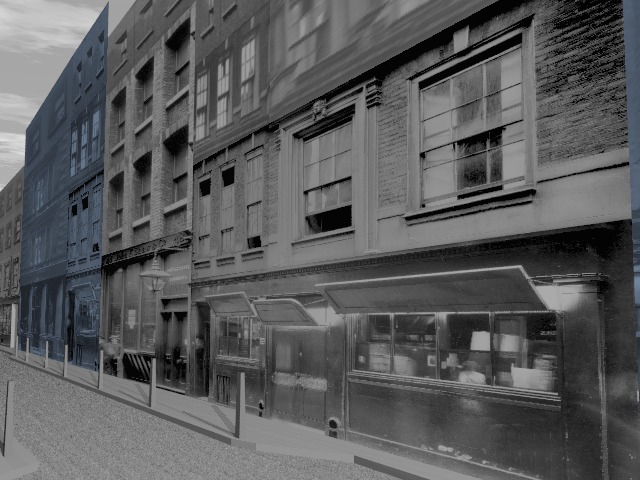
Looking eastwards with Nos 46 and 47 in foreground
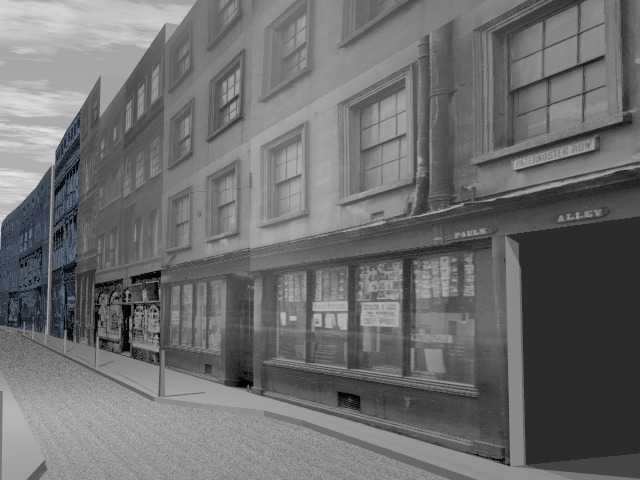
Looking eastwards with Nos 51 and 52 in foreground
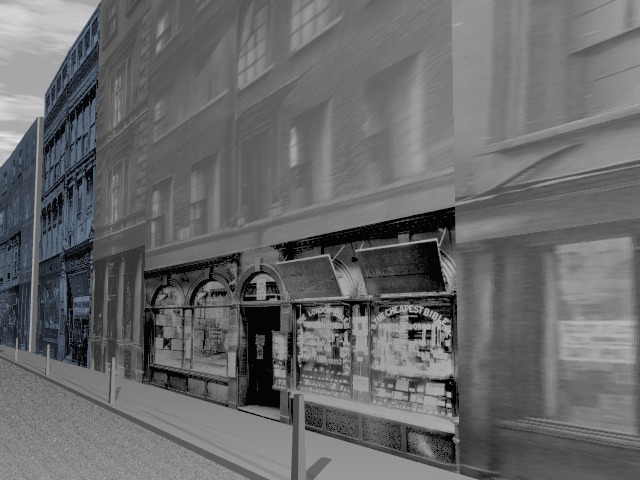
Looking eastwards with Nos 53 and 54 in foreground
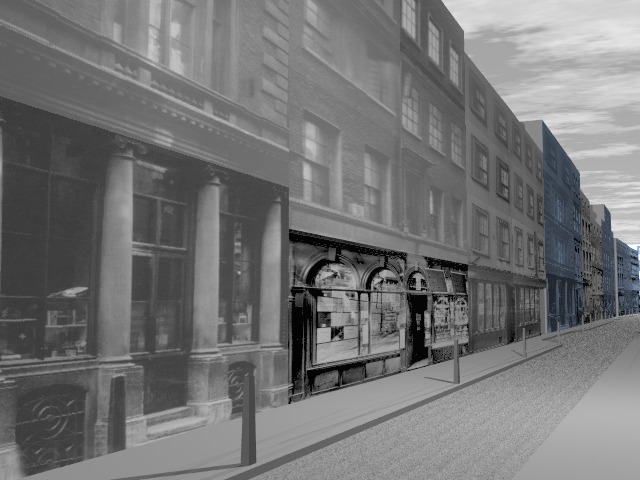
Looking westwards with No 55 in foreground
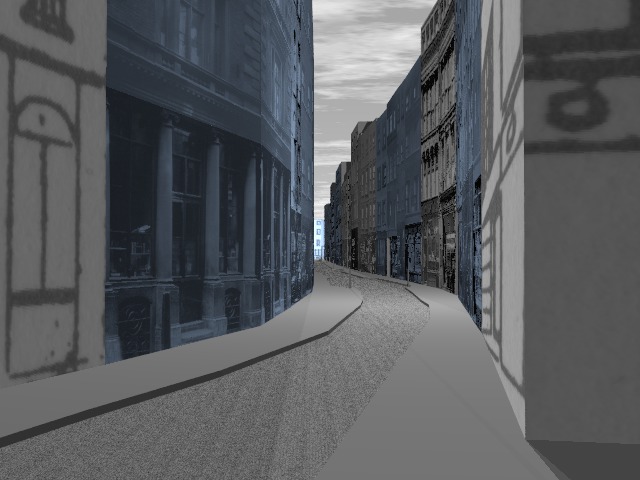
Looking westwards from the east end
The model is normally viewed interactively in our laboratory, which features a whole-wall display. This is high resolution, displaying 4200×2400 pixels, so that the size of each pixel on the screen is about 1mm2. It is also stereoscopic; although you have to wear goggles, you do gain a really good impression of depth. Interaction with the model is done with a variety of devices, and the image below shows the principal developer of the model using a gestural interface (courtesy of a Microsoft Kinect) to control movement through it.
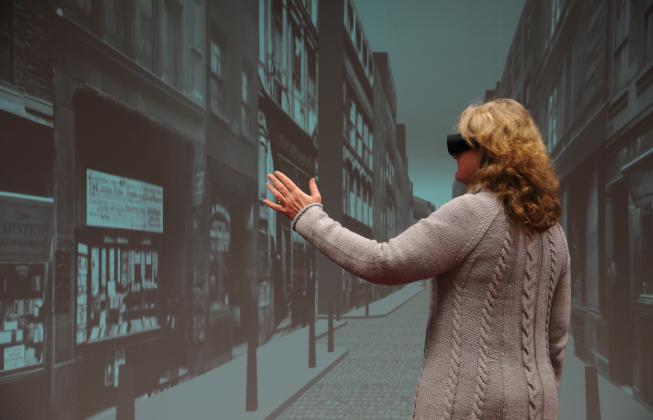
Interacting with the 3D model in our research lab

